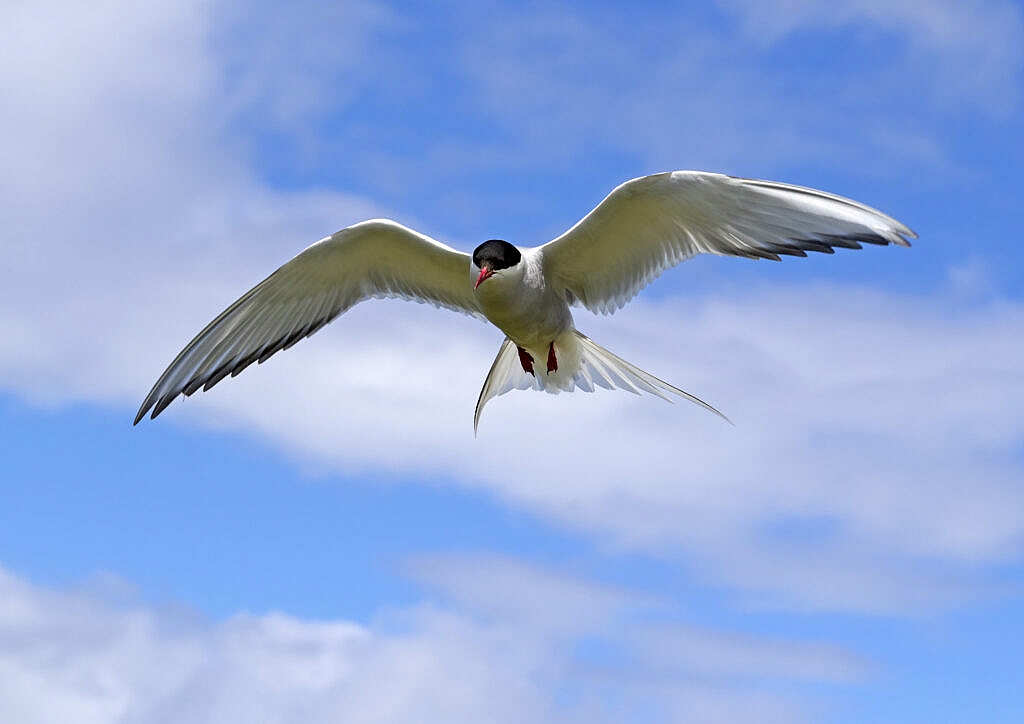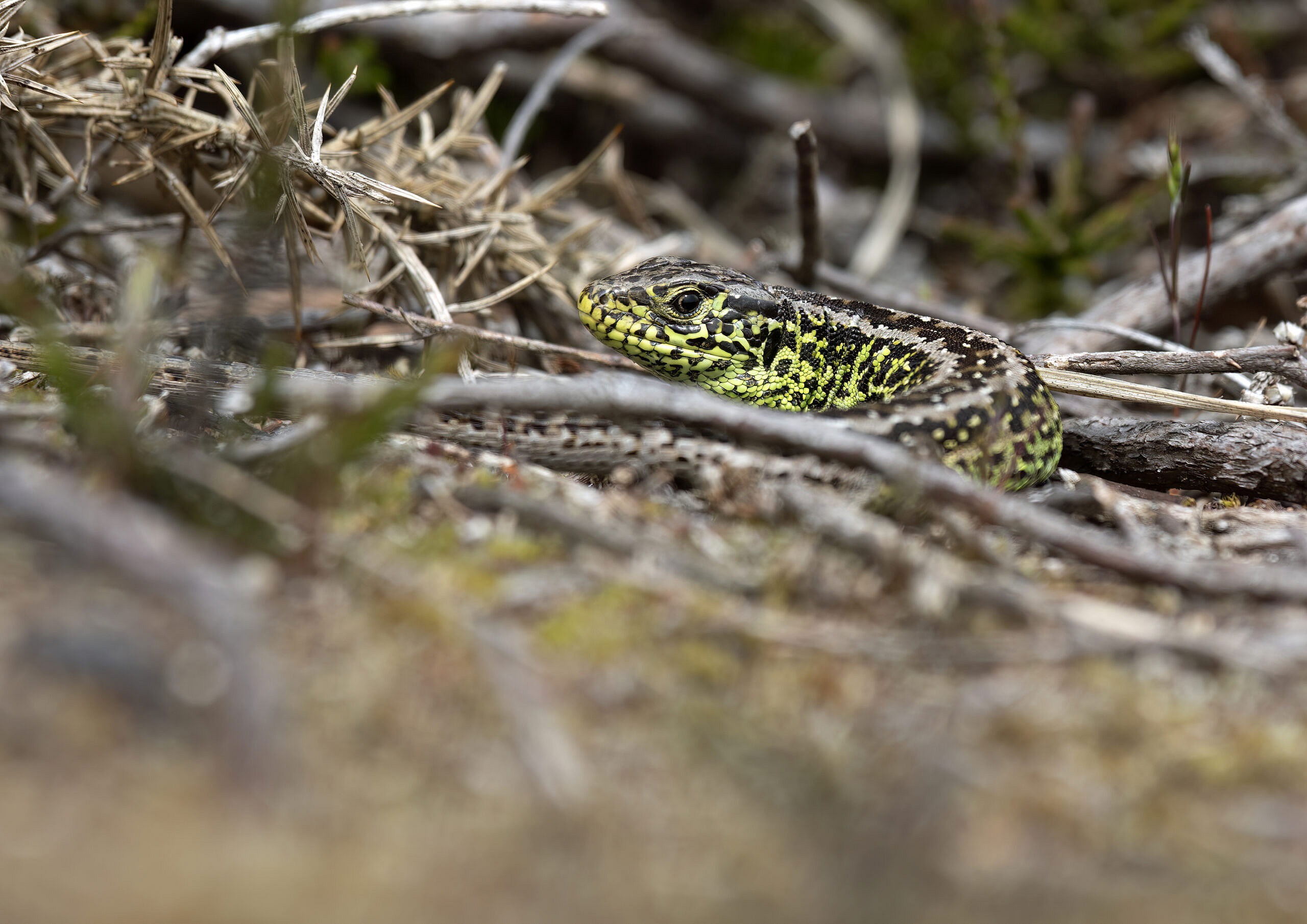I’ve recently returned from a trip to Scotland. On my way back down to Wiltshire, I decided to fulfil a longstanding ambition and visit the Farne islands.
If you’re interested in wildlife, the Farnes have always beenone of those places that you need to visit at least once in your life. Nestling a few miles south of the holy island of Lindisfarne, and a couple of miles offshore from the Northumberland coast, “island” is perhaps too grandiose a word for these small chunks of rocks that barely stick out from the sea. Some disappear entirely at high tide, which is what has led to so many ships being wrecked on them, until the first in a series of lighthouses were built to warn ships away. On some, grey seals doze away the hours of low tide until they are washed off the rocks by the rising sea. But others stay far enough – just – above the waves to be habitable, if you can use that word for a home that faces out into the North Sea with nothing but deep, cold waters between you and Denmark. Inevitably home to religious hermits, monks and even some shipwrecked sailors who decided to stay put, the islands have been occupied for well over 1600 years.

But it was the non-human residents of the Farnes that I had come to see. They are famous for their puffins, which are abundant and come quite close to visitors – but not as close as the arctic terns. At 6.8 hectares, Inner Farne, is the largest of the the Farnes, and these diminutive, streamlined seabirds arrive every there year to nest to raise their speckled, sand-coloured chicks. Anything up to 3,000 pairs are scattered across the islands, but Inner Farne is their spiritual home in every sense, as most nest in and around the 14th century chapel of St. Cuthbert, a short walk up from the quayside. Here the National Trust wardens have cleared vegetation and created small strips of sand and pebbles for the terns to raise their chicks.

With a white belly, grey wings, bright red bill and legs and a black cap that gives them the faint impression of being flying versions of the Beatles, the Arctic tern is a prodigious bird. Weighing in (in this Wimbledon week) at about twice the weight of a tennis ball, it has an 85-centimetre wingspan, a 33-cm long body, and long, flowing streamers from its tail. When it hangs effortlessly in the air above you with its long tail streamers flowing in the breeze, it could easily be mistaken for a kite. But I described the Arctic tern as “prodigious” for a reason: these seabirds make the longest migration of any species on earth. They rather like summers, it seems, since every year they chase the sun, flying from the Arctic to the Antarctic and back again – a round trip of some 22,000 miles every year that takes them just three months to complete. In 1982, one chick ringed in mid-summer on Inner Farne was found in October that same year in Melbourne, Australia – as a fledging around two months old, it had just flown at least fourteen thousand miles in just a few weeks.
Inner Farne is one of the birds’ breeding stop-offs, where they are drawn, just like the puffins, to sandeels, the small worm-like fish that abound off our shores. Here they lay eggs and raise chicks, which they will vigorously defend against all threats, including people. Look at any visitor’s guide to Inner Farne and the first thing you will see is “bring a hat”. The Arctic terns are unafraid of people, and will repeatedly dive-bomb you, making a clicking sound as they do. Heads, fingers, even cameras are all fair game. I was keen so see these marvels of nature, so having driven for hours to get there, it was with a sinking heart that I learned that trips to the Farnes have been cancelled. The National Trust had seen dead sea birds washing up on the island’s shores, and since a new and deadly version of Avian ‘flu is wiping out vast numbers of seabirds around the world, they felt that the responsible thing to do was to close the island to visitors. I then learned that although the islands were closing the following day, my trip would still go ahead.

The terns were everything that I had been led to expect. Beautiful, graceful and feisty. I had barely set foot on the island than I was being attacked by birds, screeching and making a fast-paced clicking sound, as well as defecating on my hat. Those that had not read the advice to wear one soon regretted it. And for a long time I was caught up in the joy of the moment, of such a close encounter with a living thing. But then I started to consider what I was seeing. It is an offence, under the UK’s Wildlife and Countryside Act, to disturb any bird at or near its nest site. I have long wondered how the National Trust gets away with allowing people to walk amongst the nests. It was clear now I was on Inner Farne that the birds were very definitely being disturbed by my presence. And very quickly my pleasure at being able to make the trip started to be replaced by a deep discomfort at what I was a part of. And that discomfort increased when I recalled what had been said at the National Trust booth when I paid my entry to the island.
Although there were obvious dead birds along the beaches, avian ‘flu is not confirmed as being present on the Farnes yet. The National Trust had told me they were closing the islands – and this is a direct quote from their staff – “to help improve the Tern’s breeding success rates”, so that if avian ‘flu did arrive from the nearby islands, the terns would have a chance of maintaining their population.
Hang on a minute. To increase the birds’ breeding success rate?
I had always assumed – and read – that the presence of people on the Farnes boosted the bird’s breeding success by dissuading black-backed gulls and other predators from taking their chicks. This seemed to be confirmed when, in the Covid year of 2021, Inner Farne was abandoned by humans and the terns did so as well, leaving it to nest on other islands. But an alternate theory was that the birds left the island because there were no longer any wardens to remove vegetation to create the sandy stripes the terns were nesting on. In other words, what the terns needed were sandy strips rather than people. And that means that, along with all the other visitors, I was technically breaking the law and certainly impacting the wildlife, something I go to great lengths to avoid.

There are other places where you can get close – perhaps unreasonably close – to nesting birds. I’ve been to Skomer island, off Wales’ west coast, where puffins can sometimes undermine the paths with their nest burrows. Surveys done there suggested that the visitors had no impact on the birds, but a puffin will completely ignore a human being, whereas the arctic terns on Inner Farne were doing anything but. If nothing else, constantly flying up into the air and dive-bombing visitors takes energy and food that the birds could be passing on to their chicks.
The Farnes are now closed to landing visitors. I feel sorry for those that will miss the close views of the beautiful, determined, globe-trotting arctic tern. But I am glad. And I will be even happier if visits never restart. Because knowing what I do now, I would never want to return. There is always a difficult balance between engaging with the public and getting their support, and disturbing the very wildlife you are trying to protect. I tend to come down on the side of leaving the wildlife alone. As is so often the case, the terns probably need our absence – or at least, the absence of visitors – to thrive






1 comments On Is it time to permanently stop visits to the Farne islands?
Fantastic birds, but all that screeching and dive-bombing must be stressful for the parents, so I think you have made a good decision. It’s so tempting to get ‘closer to the nature’ but inevitably humans cause problems by venturing closer than is ‘normal’.
Unfortunately the NT weigh up finances vs animal health – well, I know which should take priority!
Having said that, the photo of the tern in flight is particularly beautiful.
Comments are closed.